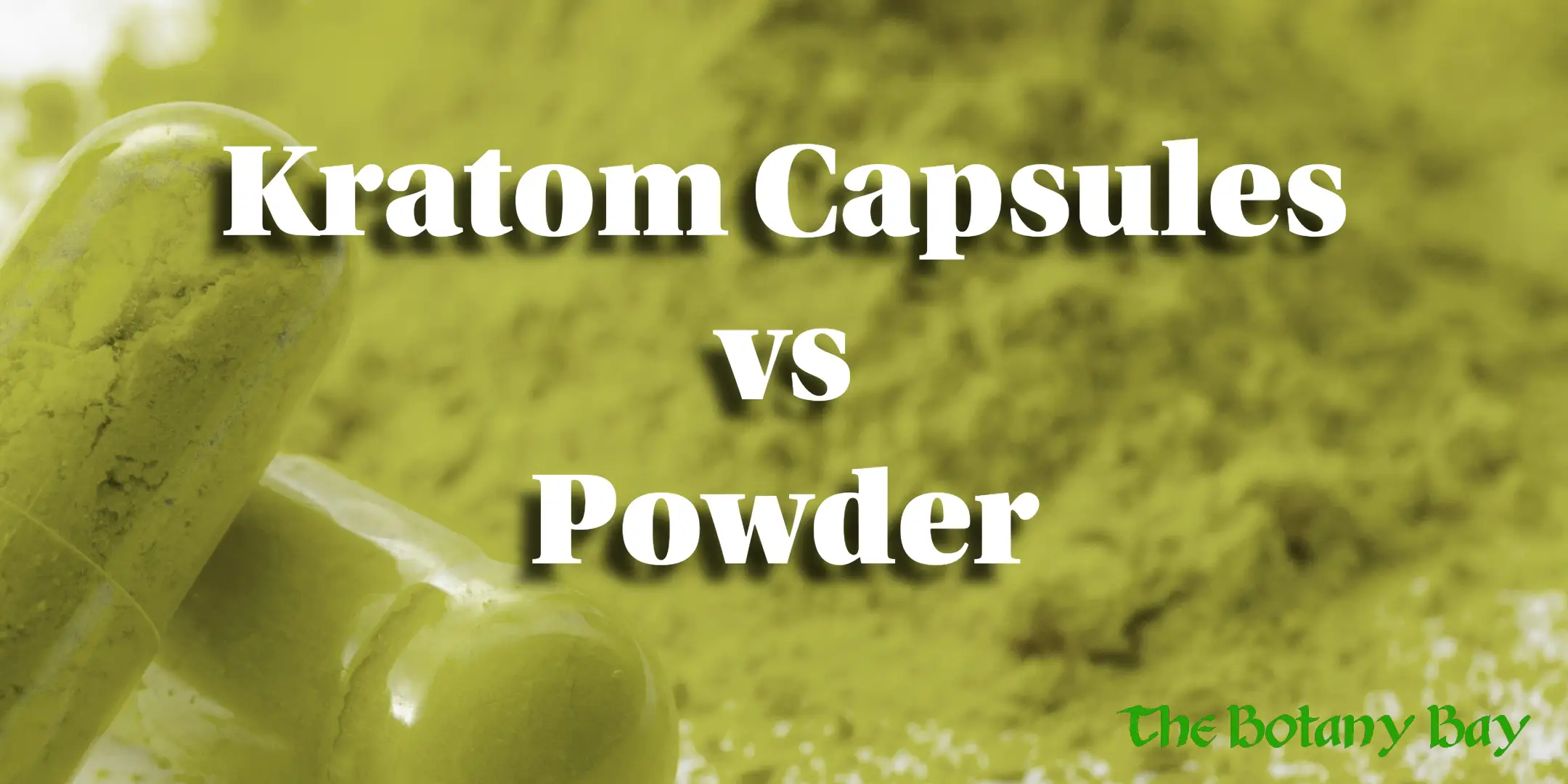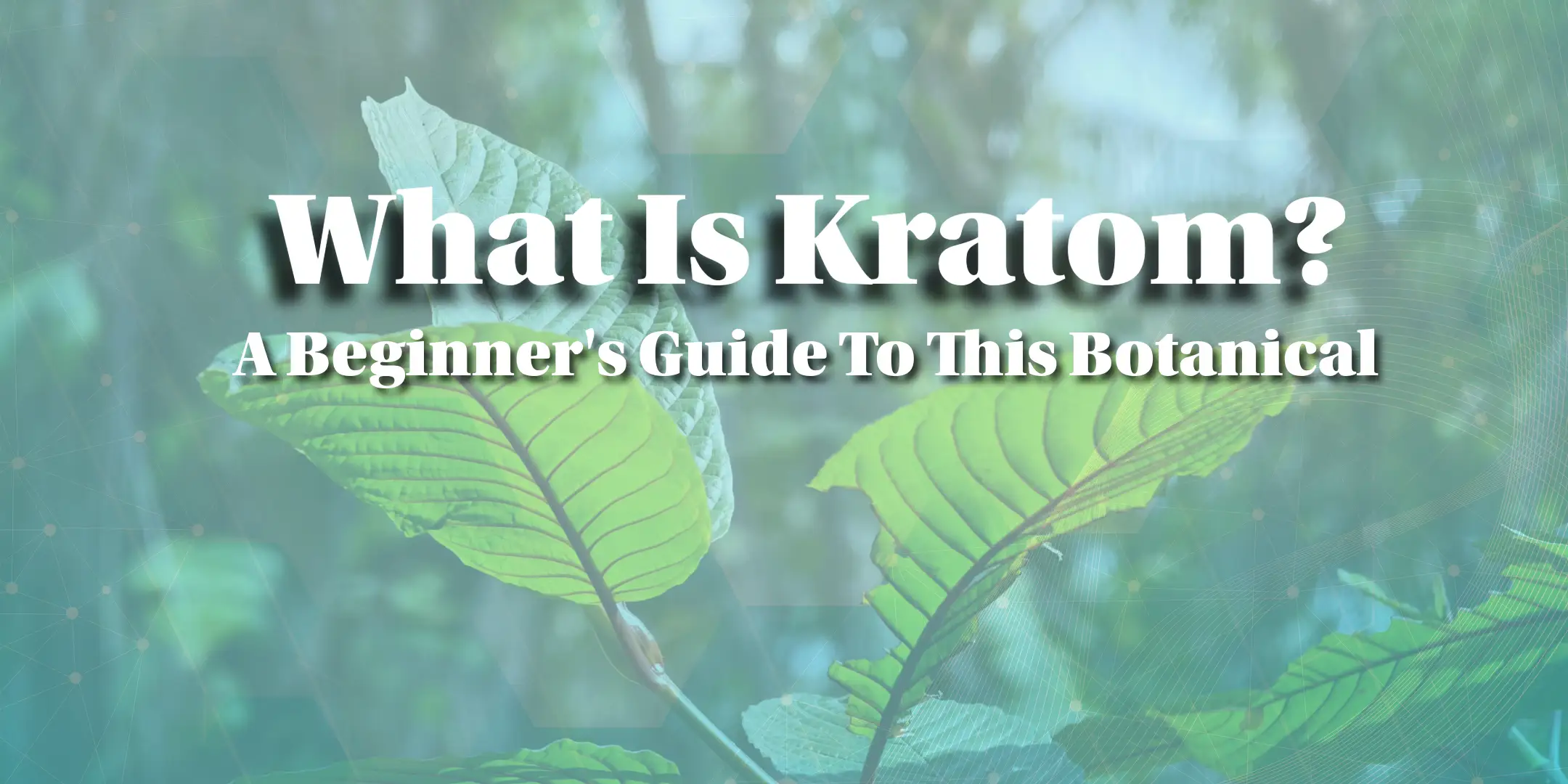
Kratom products are most often sold as capsules or powders. Many people investigating kratom like to compare and look at kratom capsules vs powder. Both begin with the same plant, Mitragyna speciosa, but the format affects how the product is measured, packaged, and used. At The Botany Bay, we carry kratom from trusted brands including Earth Kratom, 1836 Kratom, MIT 45, and many others.
Kratom Capsules
Capsules contain pre-measured kratom powder sealed into gelatin or vegetarian capsule shells. This format removes the need for scoops or scales and makes it easier to keep consistent portions. Capsule products are typically sold in resealable bags, in varying sizes based on number of capsules and how much powder is in each capsule. Most capsules come with about 500mg of kratom powder up to 1000mg (half a gram up to one gram). At The Botany Bay, brands such as Earth Kratom and 1836 Kratom provide capsule options in a variety of strains and blends.
Kratom Powder
Powder is the most traditional way kratom is packaged in the U.S. It is made from dried, ground leaves and typically comes in resealable bags. Many kratom enthusiasts prefer powder for its flexibility in portioning and blending. Powder is most often used for making into a traditional tea, although it can be mixed into a variety of liquids. Powder also is often preferred for its lower cost comparatively and might be taken orally like capsules.
Extracts and Specialty Formats
Some brands also produce extracts, which differ from plain powder and capsules. Extracts are concentrated products made by isolating specific alkaloids, such as mitragynine or 7-hydroxymitragynine. These may appear as liquid shots, tablets, gummies, tinctures, or even extract capsules. At The Botany Bay, we carry a selection of kratom extracts, as well as 7-hydroxy kratom products and kratom/kava blends that have become popular with customers.
Choosing Between Capsules and Powder
The decision between capsules and powder usually comes down to preference and convenience, but in some cases, budget is a consideration:
- Capsules: Pre-measured, portable, and discreet. No scoops or measuring needed.
- Powder: Flexible, versatile, and available in larger bulk packages. Offers most kratom per dollar.
Neither format is inherently better. Both deliver the same plant material, but packaging and convenience differ. Extracts provide an additional option for those looking for concentrated alkaloid formats.
Legal and Regulatory Notes
Kratom is regulated differently across states and cities. Some areas allow sales only to adults 18 or 21, and a few prohibit it entirely. Several jurisdictions have passed versions of the Kratom Consumer Protection Act (KCPA), which sets requirements for testing and labeling. Customers should always confirm local laws before purchase.
Important Information
- Kratom is for adults only. Age limits vary (18+ or 21+).
- Not evaluated by the FDA.
- Not intended to diagnose, treat, cure, or prevent any disease.
- Keep out of reach of children and pets.
Frequently Asked Questions
What is the difference between kratom capsules and powder?
Capsules contain pre-measured kratom powder in capsule shells. Powder is the raw ground leaf sold loose in bags.
Which brands offer capsules at The Botany Bay?
Earth Kratom and 1836 Kratom provide capsule options in various strain types.
Do kratom extracts differ from capsules and powders?
Yes. Extracts are concentrated products that emphasize specific alkaloids, and they are often sold as shots, tinctures, or enhanced capsules.
Is one format better than the other?
No. Capsules and powder both contain the same plant material. The choice is about convenience, packaging, and personal preferences.


